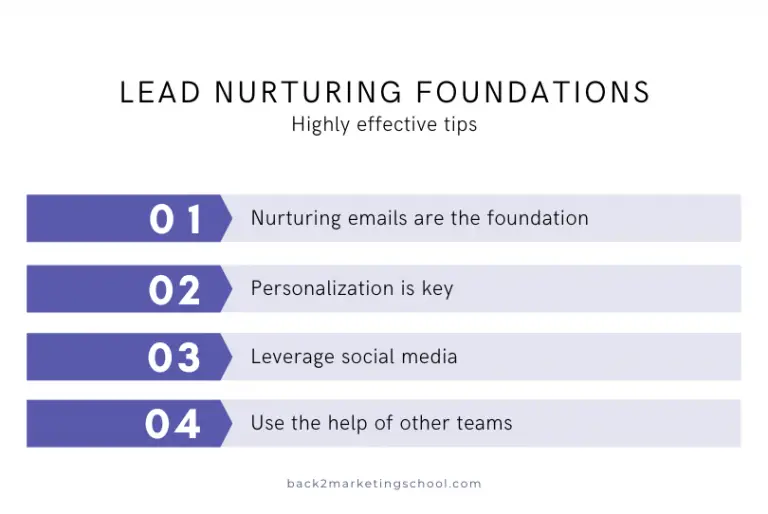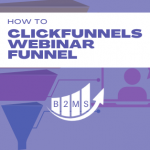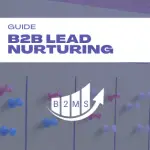Skyrocket Your Conversions with Advanced Lead Nurturing Workflows
As you probably know, most leads aren’t typically ready to make the purchase right away. However, with a lead nurturing workflow, they’ll be ready to buy in no time.
So, what is lead nurturing workflow? And what are its benefits?
In this article, we’ll tell you everything you need to know about automated lead nurturing workflows, along with an example to help you understand the process.

What Is an Automated Lead Nurturing Workflow?
Lead nurturing is the process in which you develop relationships with your leads and nurture them through the buying journey.
In other words, you’ll be guiding and supporting the leads throughout the process, which builds a trusting relationship between you and the leads.
Generally, inbound lead nurturing focuses on building brand awareness and establishing friendly, lasting relationships with customers.
Further, automation can help run this process easily and smoothly. You’ll be able to communicate with your leads and assess what works and what doesn’t, as well as improve your strategy.
Simply put, a particular action, also known as the trigger, can start the automation process. That can be anything from subscribing to an email list or signing up to requesting a product demo or filling out a lead generation form.
What Is an Example of a Lead Nurturing Workflow?
There are many ways you can achieve an effective automated lead nurturing workflow. For starters, it’s important to understand where the lead is coming from and where they are in the buyer journey. Let’s assume you offered a lead magnet such as an e-book or data report. Your lead downloaded the content asset. This is how a lead nurture stream could look like:

- Send the lead the content asset immediately. (I prefer sending it to the inbox instead of linking – that way you ensure that the correct email address was submitted, and you collect double-opt consent if required.)
- Before you send the document, get the double-opt-in consent and make this message relevant. “Hi, your e-book is on its way, just kindly confirm your email address below, so we can send you the document.”
- Send related content to that content piece. That can be another PDF, blog post, or just an email.
- What is the next logical step? Is there a way to tie a case study or user case to the content topic?
- Repeat this until your related content pieces are exhausted.
- Add the person to your general email marketing list with regular updates and batch emails to promote a webinar or new e-book, when you host or release one.
Shameless plug: If you want to experience email lead nurturing and get a real life example, sign up for our marketing challenge.
How to Build a Lead Automation Flow
The process mainly focuses on turning a lead into a customer. To reach this goal, you’ll need to have a thorough strategy.
You’ll also need some key elements to help you plan the lead nurturing workflow. That includes the following elements:
- Lead contact information
- Segmentations to help reach your target audience
- A detailed buyer’s journey to understand how you’ll approach the lead
After planning your strategy, you’ll need to start taking steps. Here are some steps that can help create a successful lead-nurturing workflow:
- Establish the goals of the campaign
- Find your target audience
- Set up the workflow of any automation tool or lead nurture software
- Review the results and adjust your strategy
Then, you’ll need to automate your lead nurturing strategy. Tools like HubSpot, Convertkit, Clickfunnels, and Builderall can help you with the automation process.
Best Lead Nurturing Strategies
Here are some examples of highly effective lead nurturing strategies:

1. Lead Nurturing Emails
Email marketing is an easy yet effective way to lure potential clients. More importantly, automating a lead nurture email campaign is simple.
2. Personalization
Most customers ignore non-personalized emails and messages. Personalization is one of the essential aspects of lead nurturing.
3. Use Social Media
On average, people spend around 2 hours and 31 minutes on social media every day. For that reason, using social media to your advantage can work wonders.
4. Use the Help of Other Teams
You should align your sales, customer support, and marketing teams for the best results. After all, lead nurturing is a team effort.
Benefits of Automated Lead Nurturing Flows
Automated lead nurturing flows allow you to reach the right customer at the right time. One of the most important benefits of lead nurturing is increasing conversion rates.
With automation, you can do that with less time and effort. Automating your lead nurture strategy is like building an automatic conversion machine.
Although the automation process isn’t always easy, it’ll keep on giving you good results. With some adjustments every now and then, you’ll easily establish trusting, lasting relationships with your leads.
The more advanced the automation is, the better results you’ll get. This way, lead capture will be easy, and you’ll have better conversion rates!
It’s safe to say that automation is the future.
FAQs
What Is B2B Nurturing?
Business-to-Business nurturing, also known as B2B nurturing, is when the lead is another company or business.
B2B nurturing is a little different from B2C nurturing. That’s because the lead is a company that goes through a buying journey on its own terms. The company will usually have a lot of decisions to make before approaching the vendor.
In fact, in this case, the lead will be gathering information and doing research long before they’re ready to make the purchase. So, B2B nurturing is more professional than B2C nurturing. Therefore, the B2B attribution is also more complex.
What Is Lead Nurturing Workflow in HubSpot?
The lead nurturing workflow in HubSpot is a strategic process that automates and optimizes the nurturing of potential customers, or leads, throughout their buying journey. This workflow involves leveraging HubSpot’s robust features to deliver personalized and relevant content to leads based on their behaviors, preferences, and interests. By utilizing automated emails, targeted content offers, and other engagement tactics, HubSpot helps businesses nurture leads at different stages of the sales funnel.
Workflows can be triggered by certain user actions, such as deal stage changes, updated lead score, or website interaction, captured through the HubSpot tracking code.
Wrapping Up
Lead nurturing workflow is a strategy that companies use to attract potential customers and build lasting relationships with them. In turn, it can increase brand awareness and sales.
There are various lead nurturing strategies you can go for. For example, you can use emails to nurture your leads and turn them into customers.
More importantly, automating your lead nurturing workflow can save you a lot of time and effort. Additionally, it can provide you with better results and higher conversion rates.

Sascha is a Lifecycle Marketing Consultant with over 8 years of digital marketing experiences in Silicon Valley, the UK, and Germany.
After leading the demand generation for a 100+ million company, he decided to venture out on himself. He’s now helping clients to attract and convert more leads and customers.
His main focus are SEO, paid media & marketing automation – all with the focus to tie marketing campaigns to revenue.
Sascha has been featured in industry publications.



